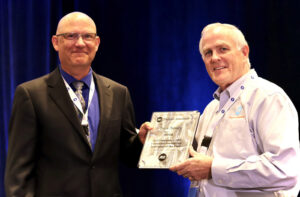Rather than stealing industry talent from each other, let’s get back to basics and back to schools
There are plenty of people who write nice blogs, articles and podcasts about how we should go about hiring people — from techs to parts people and the rest, to join our industry and make a career out of it. There are some good ideas, too.
Currently, the repair industry works primarily with schools to recruit young techs and others. We can’t mint people in the aftermarket fast enough to fill the retirements in a given year. Unfortunately, many eventually end up stealing talent from each other. Manufacturers and distribution companies do the same.
So let’s look at the aftermarket holistically. Manufacturers need people at all levels, the distribution chain can certainly use people, and the repair level is dying for people. It’s time to fill the aftermarket pipeline.
As for me, I love the aftermarket. I love all it does and the people in it. One of my early mentors used to say, “Be careful, once you have the industry in your blood, it never goes away.” That’s true in my case and suspect it’s the same for most of you, too. And given that it can be a tough industry to be in, it’s the only explanation why some people make the aftermarket their career. Those that enter this industry just for a job wash out quickly.

There’s little doubt that the next generation is different. As reported by one source, a majority of young people today (62%) have no desire to become managers. About a quarter trust their leadership, the rest don’t. But wait a second, think back. Weren’t we, today’s industry veterans, once the same? Maybe it’s not the people that have changed.
One thing that has failed the auto aftermarket has been the high schools. It’s a statement said with sadness. And while current curriculum does us few favors, I point the finger at administration and guidance that gives us little support in the auto industry or trades overall. For proof, in my state there are 754 high schools. Of those, only 14 have National Automotive Technicians Education Foundation (NATEF)-certified shop programs.
Even with a few non-NATEF programs, there’s less than an estimated 3% to 4% of the high schools with auto shop programs. It used to be nearly the majority. They also had metal working, electronics, sheet metal, woodworking and more. Now it’s all about STEM, which all require the assumption of a forthcoming college degree.
How did this happen? Well, if I am an admin or guidance counselor I want to be known for my student to standard college share. How many times have you heard a high school proudly announce, “We sent 90% of graduates to four year colleges?”
If that’s the incentive, those who would be perfectly happy going to a technical school or joining a trade are basically out of luck. In fact, one study I read stated that for all techs, 47% had a high school diploma (FYI, I do not believe it a bit, no deep data to review).
In any case, would having a tech program fix our pathetic graduation rates? When the money being spent is all getting shoveled into college prep, how long will many students even stick around in high school. As of today, only about 40% successfully graduate from a four year college program. And many graduate with a ton of debt with, arguably, few marketable skills.
So, first step in our new generation of “aftermarketeers” is to continue working with the tech colleges as we have been doing. The next step is to start showing up in local school districts and bringing others from all of the trades with us to demand that they include tech schools as colleges in their numbers and bring back shop classes to local high schools.
Not just as a way to shove off poorly performing students, but with pride and industry and community involvement. NATEF is a great bunch of people to know and a great place to start.
We can mentor young people in high school. Go see your high school’s administration and ask why they don’t have tech programs. Or, as mentioned, include tech schools as a part of their successful graduation count. And help those who are dropping out to recognize a different path for their lives. A quarter of kids who begin as high school freshman are gone at graduation. That needs to be fixed. Get involved at the front end of the aftermarket chain.
Lastly, I was on a board for a state automotive dealers’ group for quite a long while. Chief among the responsibilities was to create and offer scholarships to high schoolers who would manage a minimum GPA. Working with a T&E manufacturer the program would provide the successful scholarship kids with about 75% of their tech school tuition and a large, expansive box of tools to keep when they graduated with a job in the sponsoring dealer’s shop during school. It truly was — and is — an incredible program. A small shop, franchise or manufacturer could do the same creatively on the independent side.
Will you join in, given your busy schedule and demands on your time? It truly means an end to wondering where the next great aftermarket employee is coming from. At any level. And while we may train many, a few may fall off the back of the truck. But they fall off with skills and marketable talents. And don’t worry, if it’s in their blood, they’ll be back.
At a young age, industry veteran Tom Langer started detailing cars for his family’s dealerships, which then led to work in the jobber and warehouse business, along with a machine shop and auto body shop. He held a variety of positions with an auto parts manufacturer for 10 years, and remained in the industry working with shops, warehouses and manufacturers in research and more.







Comments are closed.